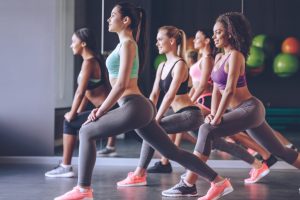The world of fashion and beauty is ever-evolving, with new trends and technologies emerging every season. From sustainable fashion to virtual try-on, the industry is constantly pushing boundaries and embracing innovation. In this essay, we will explore the future of style and beauty, discussing the key trends, technologies, and influences that will shape the industry in the years to come.
Sustainable Fashion
One of the most significant trends in fashion today is sustainability. As consumers become more aware of the environmental and social impact of their purchasing decisions, brands are responding by adopting more sustainable practices. This includes using eco-friendly materials, reducing waste, and promoting ethical labor practices.
One of the most influential sustainable fashion trends is the rise of second-hand shopping. With the rise of online marketplaces like Thredup and Depop, consumers can now easily buy and sell pre-owned clothing. This trend not only reduces waste but also promotes a more circular economy.
Another sustainable trend is the use of eco-friendly materials. Brands are now using materials like recycled polyester, organic cotton, and Tencel to reduce their environmental impact. These materials are often produced using sustainable practices, such as recycling plastic waste or using rainwater to irrigate cotton fields.
Virtual Try-On and Augmented Reality
Another significant trend in fashion is the use of technology to enhance the shopping experience. Virtual try-on and augmented reality (AR) are becoming increasingly popular, allowing consumers to try on clothes virtually before making a purchase.
Virtual try-on technology uses 3D scanning and machine learning algorithms to create a virtual avatar of the consumer. This avatar can then try on clothes virtually, allowing the consumer to see how the clothes fit and look without having to physically try them on.
AR takes virtual try-on a step further by allowing consumers to see how clothes will look in real-life situations. Using a smartphone camera, AR technology can superimpose virtual clothes onto a consumer’s real-life environment, allowing them to see how the clothes will fit and look in different settings.
Personalized Beauty
The beauty industry is also embracing technology to enhance the consumer experience. Personalized beauty is becoming increasingly popular, with brands using data and machine learning algorithms to create customized products and recommendations for individual consumers.
One of the most significant trends in personalized beauty is customized skincare. Brands are now using data to create personalized skincare routines and product recommendations based on individual skin types, concerns, and preferences.
Another trend in personalized beauty is the use of 3D printing to create customized makeup and hair care products. Brands are now using 3D printing technology to create customized lipstick, eye shadow, and hair care products that are tailored to individual preferences.
Social Media and Influencer Marketing
Social media and influencer marketing are also playing a significant role in shaping the future of fashion and beauty. Social media platforms like Instagram, TikTok, and YouTube have become essential tools for brands to reach consumers and promote their products.
Influencer marketing is also becoming increasingly popular, with brands partnering with social media influencers to promote their products and services. Influencers have become an essential part of the marketing mix, allowing brands to reach a wider audience and build brand awareness.
Artificial Intelligence and Machine Learning
Artificial intelligence (AI) and machine learning (ML) are also playing a significant role in shaping the future of fashion and beauty. Brands are now using AI and ML algorithms to analyze consumer data, identify trends, and make predictions about future consumer behavior.
AI and ML are also being used to enhance the consumer experience. For example, chatbots powered by AI and ML algorithms can help consumers find products that match their preferences and provide personalized recommendations.
3D Printing and Digital Fabrication
3D printing and digital fabrication are also becoming increasingly popular in fashion and beauty. Brands are now using 3D printing technology to create customized products, such as shoes, jewelry, and accessories.
Digital fabrication is also being used to create customized textiles and materials. Brands are now using digital fabrication technology to create customized fabrics with unique patterns, textures, and colors.
Conclusion
The future of fashion and beauty is exciting and full of possibilities. From sustainable fashion to virtual try-on, personalized beauty, and artificial intelligence, the industry is embracing innovation and technology to enhance the consumer experience.
As consumers become more aware of the environmental and social impact of their purchasing decisions, brands will need to adopt more sustainable practices to meet consumer demand. Virtual try-on and AR will continue to play a significant role in enhancing the shopping experience, allowing consumers to try on clothes virtually and see how they will look in real-life situations.
Personalized beauty will also continue to grow, with brands using data and machine learning algorithms to create customized products and recommendations for individual consumers. Social media and influencer marketing will remain essential tools for brands to reach consumers and promote their products.
AI and ML will continue to play a significant role in shaping the future of fashion and beauty, allowing brands to analyze consumer data, identify trends, and make predictions about future consumer behavior. 3D printing and digital fabrication will also continue to grow, allowing brands to create customized products and materials that meet individual consumer preferences.
In conclusion, the future of fashion and beauty is bright, with endless possibilities for innovation and growth. As technology continues to evolve, brands will need to adapt and embrace new trends and technologies to meet consumer demand and stay relevant in the industry.
















Add Comment